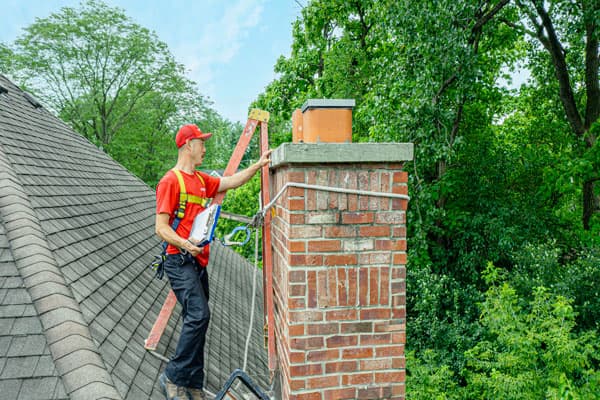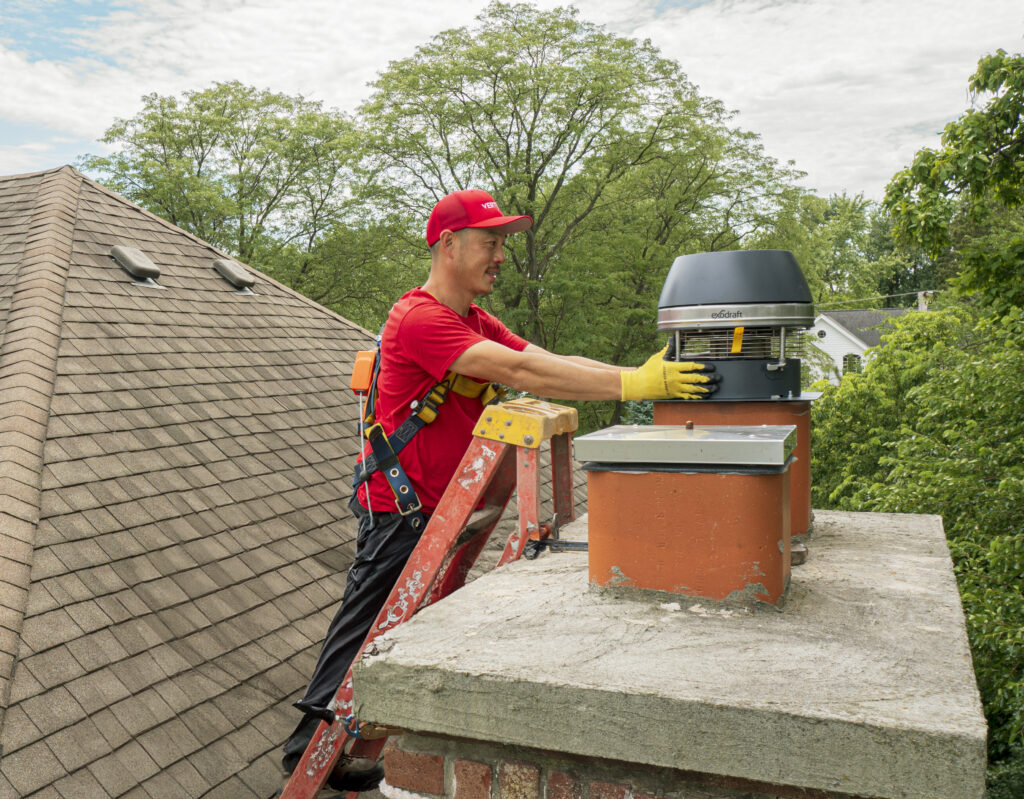
If I Upgrade My Furnace/Water Heater Appliance Do I Need to Reline My Chimney?
There’s no question that your chimney liner’s health is of the upmost importance. Without a reliable and functioning chimney liner, dangerous fumes can easily spill back into your living spaces. Carbon monoxide is among these toxic combustion byproducts, and when exposed to it, the consequences can be deadly. Not only that, but without a healthy chimney liner, you could be at risk for a serious chimney fire.
If you’re already taking the responsible step in replacing or upgrading your furnace or water heater, you might be asking yourself if you should go even further. Should you be replacing the chimney’s liner to your new appliance?

When to Replace a Chimney Liner
You might think that you’d only need to replace your chimney liner if it’s cracked, deteriorating, or malfunctioning. While those are excellent reasons to finally reline your chimney, you should install a brand new liner when you upgrade or replace your furnace or water heater.
A New Appliance Calls for a New Liner
Many homeowners are faced with having to upgrade their furnace or water heater. Newer models are much more efficient, but there are hidden costs if they’re not installed properly. Carbon monoxide can build around the water heater or condense near the chimney. Building inspectors refer to this common problem as “orphaned” water heaters, those that are forced to vent through a chimney after the removal of the old furnace.
For these new appliances to work properly, the chimneys must be large enough to expel the exhaust. However, the chimneys have to be small enough to keep warm and create a draft. Therefore, relining the chimney is the only solution to this problem. A new liner can fix the sizing problem with the chimney and help promote a healthy draft. In turn, toxic fumes won’t buildup around your new appliance.
Sometimes, installers will only quote homeowners on the cost of the new appliance, not the cost of the liner that needs to be outfitted for it to draft and protect your home against these toxic fumes. Always ask about getting a new liner installed with your new water heater or furnace because it isn’t always done, despite the fact that you’ll need it.
What happens if you don’t get a new liner with a new appliance? You don’t want to take the gamble to find out. Experts say that condensation will build up in the chimney and around the new appliance, which can cause aesthetic and structural damage. Condensation can ruin the joints and leak into unwanted areas. Not to mention you’ll be faced with the carbon monoxide buildup and lack of a proper draft to expel these dangerous, sometimes fatal, fumes.
Types of Chimney Liners
There are three popular types of chimney liners: clay, cast-in-place, and stainless steel.
Clay liners are typically used for newly built fireplaces. They’re inexpensive and have a long lifespan. Installers don’t recommend clay liners as replacement liners for your chimney because it makes for an incredibly challenging task to reline the chimney with this material. It’s much easier to go with stainless steel for a replacement liner instead.
Stainless steel liners make for the optimal replacement liner material for prefabricated fireplaces or for when you’re installing a new fireplace insert. They’re easy to install and you can connect them directly to your new appliance. Stainless steel liners are up to code for the majority of building requirements, too.
Finally, there are cast-in-place liners. For homeowners with masonry fireplaces, this is the way to go. You might have a masonry fireplace that has an old clay tile liner that desperately needs replaced. Consider replacing it with the cast-in-place liner, especially if you’re experiencing structural problems with your current chimney. Cast-in-place liners are made from a mixture similar to mortar, which then fills any deteriorating mortar joints when applied. This application can help reinforce a chimney’s overall structure.

Lifespan of Your Chimney Liner
These three different liner materials all have differing lifespans. Both clay tile and cast-in-place liners can last up to 50 years. Stainless steel liners can last anywhere between 50-100 years depending on the quality grade of steel used.
The higher quality chimney liner, the better chance you have at getting a lifetime warranty and a longer lifespan overall. Choose carefully and don’t be afraid to put a little money down on because liners are extremely important for a healthy, functioning chimney. You don’t want to go through the trouble of replacing a liner or risking your health against toxic fumes or chimney fire with a cheap liner.
We’ve dedicated ourselves to making sure your home is safer and cleaner after we’ve completed every project. Get started on your next chimney cleaning or other chimney related, Contact us today!
